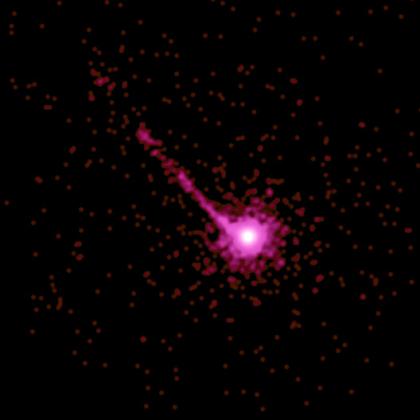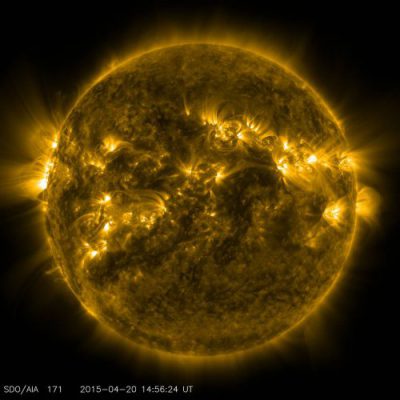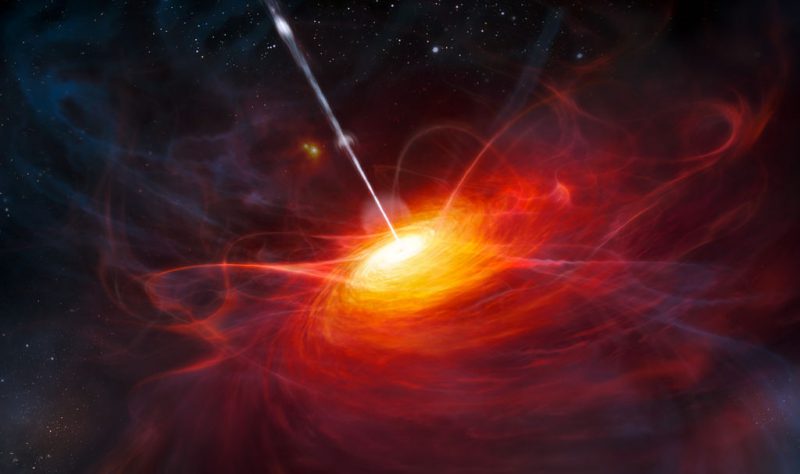Somewhere in the vastness of space, there is a doctor for black holes. His name? Albert C. Cosmos, M.D.!
This cheerful doc gives these energy-gobblers their light-yearly physical, and he always ends each appointment telling his patients the same advice: "Remember: A star a day keeps the doctor away!"
Okay. None of what we just wrote is true. But nonetheless, there actually is a black hole out there that seems to be taking Dr. Cosmos' advice very seriously.
Its name is J2157.
It is one of the largest—and fastest growing—black holes in the universe.
And it eats the equivalent of almost one Sun-sized star a day.
My, my, how you've grown!

This x-ray image of a quasar shows the beam of energy flying from its centre. (NASA/CXC/A.Siemiginowska(CfA)/J.Bechtold(U.Arizona)
Scientists first announced that they had discovered J2157 in 2018. At the time, its key feature was an impressive quasar. This is a phenomenon where extreme amounts of energy are shot out from both poles of the black hole in powerful beams.
Astronomers knew then that it was a very large black hole. But in the two years since then, new measurements have revealed that it is even bigger than previously thought. The stats are mind-boggling.
Its mass (or the amount of matter inside it) comes to 34 billion Suns. This makes it an ultramassive black hole, one that is 8,000 times the size of the supermassive black hole at the centre of the Milky Way.
Its diameter (or the distance across it) is about five times the width of our entire solar system. Just think of that!
Chomp chomp

Could you eat one of these a day? (NASA/SDO)
And then there's the hungriest black hole's appetite. To be clear, it's not neatly popping a single Sun-sized star a day, as we might a vitamin. Instead, it is constantly sucking up matter from its accretion disk. This is the swirling disk of matter that is orbiting the black hole at incredible speeds.
J2157 steadily slurps down its meal, day after day, year after year, age after age. And when you think about the sheer amount of matter needed to supply this all-you-can-eat mega buffet? Well, let's just say that we're really glad that we don't work in that restaurant!
And as for whether or not Dr. Cosmos' advice actually keeps J2157 healthier than your average black hole, that might be a matter of opinion. Personally, we think it should consider chewing more slowly and enjoying its food!
But we can't argue with the results much—it's definitely large!
 This illustration of quasar J1120+0641 shows an incredible amount of energy. And yet even this quasar is about 19 times smaller than our hungry giant, J2157. (ESO/M. Kornmesser)
This illustration of quasar J1120+0641 shows an incredible amount of energy. And yet even this quasar is about 19 times smaller than our hungry giant, J2157. (ESO/M. Kornmesser)










The diameter is the distance across a circular object. Radius refers to a point in the middle to the edge.
Thanks.
But I know what the diameter is.
🙂